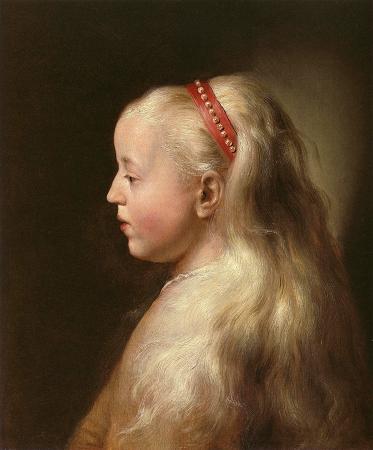Portrait. In the 5th century BCE through the 1st century CE, Greek and Roman classical portrait sculptors aimed to capture the ideal proportions and beauty of the human form. Portraits were less common in the early Middle Ages, with a focus on religious figures depicted in a symbolic and stylized manner. As Gothic art began to flourish in the 12th century, portraits incorporated religious symbolism but also began to show more individuality, particularly for royalty and nobility. A rebirth of classical ideals in the Renaissance led to a renewed focus on realism and naturalism. In the 16th Century, Mannerism, a reaction to the Renaissance, saw a shift towards elongated figures and dramatic lighting. Baroque portraits in the 17th century aimed to evoke a sense of drama and grandeur. In the 18th and 19th centuries, the Rococo style brought a lighter and more playful touch to portraits. Neoclassicism returned portrature to classical ideals of balance and proportion. Realism focused on accurate depictions from everyday life. The 20th and 21st centuries saw an explosion of styles in portraiture. Expressionism used distortion and bold colors to convey emotions. Abstract portraiture focused on form and color rather than realistic likeness. Photography also emerged as a major force in capturing portraits. Portraiture is a genre of art that involves the depiction of an individual or group of individuals, typically focusing on the face and upper body. Portraits have been an important part of art history for centuries, serving a range of purposes from commemoration and celebration to documentation and critique. In contemporary art, portraiture continues to be a popular and diverse genre, with artists exploring a wide range of styles, mediums, and themes. Some contemporary portrait artists, such as Kehinde Wiley and Amy Sherald, use traditional portraiture techniques to create powerful and provocative images that challenge conventional notions of race, gender, and identity. Others, such as Cindy Sherman and Gillian Wearing, use self-portraiture as a means of exploring issues of identity, performance, and representation. Moving back in history, portraiture has a long and complex history that spans many centuries and cultures. In ancient Egypt, for example, portraiture was used to depict pharaohs and other important figures, often in idealized or symbolic forms. In ancient Greece and Rome, portraiture was used to commemorate important public figures, such as philosophers, politicians, and military leaders. During the Renaissance, portraiture became an increasingly important genre of art, reflecting the growing interest in individualism, humanism, and the natural world. Artists such as Leonardo da Vinci, Raphael, and Titian produced some of the most famous portraits in Western art history, using innovative techniques such as sfumato and chiaroscuro to create highly detailed and realistic images. In the 17th and 18th centuries, portraiture continued to evolve and diversify, reflecting the changing nature of European society and the influence of international artistic movements. Artists such as Peter Paul Rubens and Diego Velázquez produced grand and elaborate portraits of royalty and nobility, while artists such as Rembrandt van Rijn and Johannes Vermeer produced more intimate and introspective portraits of everyday people.
more...













